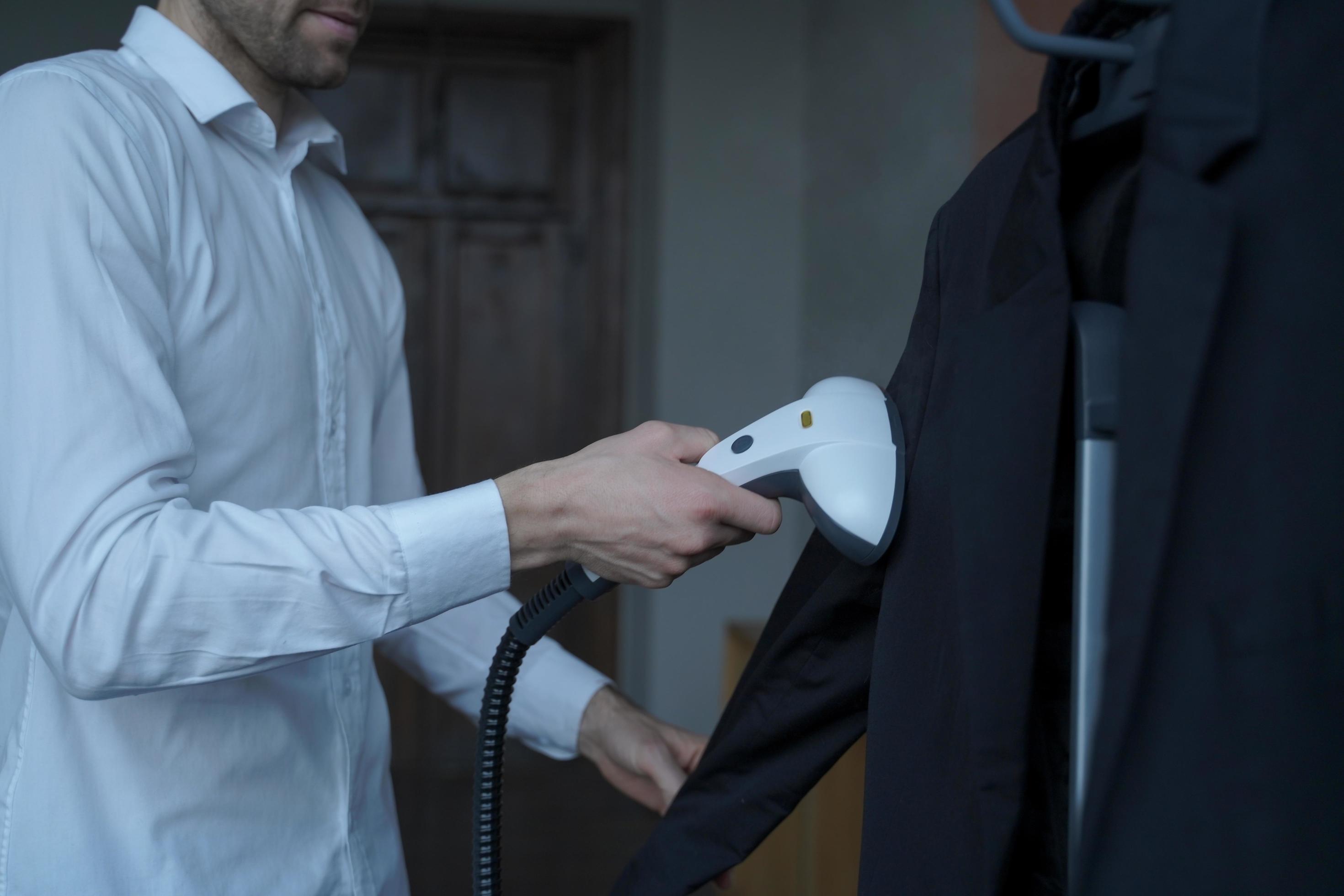

Articles
How To Store Suits In Storage
Modified: January 6, 2024
Learn the best way to store your suits in storage with these helpful articles. Keep your suits fresh and wrinkle-free for any occasion.
(Many of the links in this article redirect to a specific reviewed product. Your purchase of these products through affiliate links helps to generate commission for Storables.com, at no extra cost. Learn more)
Introduction
Storing suits properly is crucial to maintaining their quality and longevity. Whether you’re transitioning between seasons, traveling, or simply running out of closet space, a storage unit can be a fantastic solution. In this article, we will explore the best practices for storing suits in storage, ensuring that they remain in pristine condition and ready to wear when you need them.
When it comes to storing suits, there are several factors to consider to ensure optimal preservation. From choosing the right storage unit to proper cleaning, folding techniques, and selecting the appropriate storage containers, every step plays a vital role in safeguarding your valuable suits.
Join us as we delve into the world of suit storage and learn how to protect your investment.
Key Takeaways:
- Properly storing suits in a climate-controlled storage unit, cleaning them before storage, and using garment bags for protection are essential steps to preserve their quality and longevity.
- Regularly inspecting, refreshing, and organizing stored suits, along with protecting them against moisture and pests, ensures their long-term preservation and maintains their pristine condition.
Read more: How To Store Suits
Why store suits in storage?
There are several reasons why you may choose to store your suits in a storage unit. Here are a few common scenarios:
- Transitioning between seasons: As the seasons change, you may need to rotate your wardrobe to accommodate different weather conditions. Storing your suits during the off-season allows you to make room for more seasonally appropriate attire.
- Traveling: If you frequently travel for work or leisure, storing your suits in a storage unit can be a practical solution. It eliminates the need to constantly pack and unpack your suits, saving you time and effort.
- Limited closet space: Many individuals face the challenge of limited closet space. Storing your suits in a storage unit helps declutter your closet, making it easier to access and organize your everyday clothing.
- Protecting expensive or sentimental suits: Certain suits may hold a significant value, whether financially or sentimentally. Storing them in a secure and controlled environment ensures their long-term preservation and prevents damage or deterioration.
By storing your suits in a dedicated storage unit, you can free up space in your home, protect your suits from potential damage or wear, and streamline your wardrobe management.
Choosing the right storage unit
When it comes to storing your suits, the first step is selecting the right storage unit. Here are some factors to consider:
- Climate control: Opt for a storage unit with climate control to regulate temperature and humidity. Extreme temperatures and high humidity can damage suits, causing fabric to warp, fade, or develop mold and mildew. Climate-controlled units maintain a consistent environment, ideal for protecting delicate fabrics.
- Security measures: Look for a storage facility with robust security measures, such as surveillance cameras, access control systems, and on-site personnel. Your suits are valuable, so it’s important to choose a facility that prioritizes security to safeguard your belongings.
- Cleanliness: A clean storage unit is essential for maintaining the integrity of your suits. Dust, dirt, and pests can cause damage over time. Before renting a storage unit, inspect it for cleanliness and inquire about how frequently the facility is cleaned and monitored for pests.
- Convenient location: Consider the location of the storage facility. Choose one that is easily accessible for you, whether it’s near your home or workplace. This will make it more convenient for you to retrieve or store your suits whenever needed.
- Affordability: Compare pricing options and ensure that the storage unit fits within your budget. However, keep in mind that quality and security should take precedence over cost alone when it comes to storing valuable suits.
- Size: Assess your storage needs and determine the size of the unit required to comfortably accommodate your suits. Consider not only the number of suits but also any additional accessories or storage containers you may need to keep them organized.
By taking these factors into consideration, you can select a storage unit that meets your specific requirements and provides a safe and secure environment for your suits.
Cleaning the suits before storing
Before putting your suits into storage, it’s crucial to clean them properly. Cleaning the suits removes dirt, oils, and any stains that may have accumulated, ensuring that they don’t become permanent or attract pests. Here are some steps to follow:
- Check the care label: Look for the care label inside your suits for specific cleaning instructions. Follow the recommended cleaning methods to avoid damaging the fabric.
- Dry clean: If the care label instructs dry cleaning, take your suits to a reputable dry cleaner. Inform them that you will be storing the suits, as they may have specific recommendations for long-term storage.
- Spot treat stains: If you notice any stains on your suits, treat them before storing. Use an appropriate stain remover and follow the instructions carefully. Make sure to test any new stain remover on an inconspicuous area of the suit first to avoid potential damage.
- Remove all items from pockets: Empty all pockets of your suits, including any loose change, pens, or receipts. Leaving items in the pockets can cause distortion and damage to the fabric over time.
- Air out the suits: Before storing, allow your suits to air out for a few hours to remove any lingering odors. Hang them in a well-ventilated area away from direct sunlight to freshen them up.
- Use fabric fresheners: Consider using fabric fresheners or sachets to keep your suits smelling pleasant while in storage. However, avoid using strong-scented products that may leave a lingering fragrance on the fabric.
By thoroughly cleaning your suits before storing, you eliminate the risk of dirt or stains setting in and help maintain the quality and appearance of the fabric.
Folding versus hanging suits
Deciding whether to fold or hang your suits in storage depends on various factors, including available space, fabric type, and personal preference. Here are some considerations to help you make the right choice:
Folding suits:
- When space is limited or you have a large number of suits to store, folding is a practical option. It allows you to maximize storage capacity and easily stack suits on top of each other.
- However, it’s important to fold suits correctly to avoid unnecessary creasing. Here’s a simple folding technique:
- Button the jacket and lay it face down on a clean, flat surface.
- Fold one side of the jacket towards the center, ensuring that the shoulder and lapel lay smoothly.
- Fold the other side in the same manner, making sure the jacket retains its shape.
- If there are pants, fold them in half lengthwise and place them on top of the folded jacket.
- Finally, gently roll the folded suit to minimize creases.
- It’s advisable to place a sheet of acid-free tissue paper between the folds to prevent any color transfer or fabric rubbing together.
- Keep in mind that folding suits for extended periods may result in more prominent creases that will require steaming or pressing before wearing.
Hanging suits:
- Hanging suits is a preferred method if you have sufficient closet space or are storing suits short-term.
- Using wooden or padded hangers helps retain the shape of the suit and prevents shoulders from sagging.
- When hanging, always use the jacket’s loops or a sturdy hanger with a wider shoulder support. This prevents distortion and maintains the suit’s proper structure.
- For pants, consider using pant hangers with clips or bars to minimize creasing. Alternatively, fold the pants over the hanger and secure them with a clip to avoid creases along the center.
- Ensure that the storage area is well-ventilated to prevent moisture buildup, which can lead to mildew or musty odors.
- Avoid using plastic bags for long-term hanging storage, as they can trap moisture and cause discoloration or mildew.
The choice between folding and hanging suits ultimately depends on your storage space, personal preferences, and the condition of your suits. Assess your needs and select the method that will best preserve the quality and appearance of your suits in storage.
Read more: How To Store A Suit
Selecting the appropriate storage containers
Choosing the right storage containers is crucial to keep your suits protected and organized while in storage. Here are some factors to consider when selecting storage containers:
Durable materials:
- Opt for storage containers made of sturdy materials, such as plastic or fabric. They should be able to withstand stacking and provide adequate protection against dust, pests, and moisture.
- Avoid cardboard boxes as they can easily deteriorate over time, potentially attracting insects or rodents.
Size and capacity:
- Select containers that are spacious enough to accommodate your suits without excessive folding or cramming.
- Consider whether you will store accessories like belts, ties, or shoes alongside your suits. Choose containers with enough room for these additional items, keeping everything organized and easily accessible.
Clear visibility:
- Opt for storage containers with clear lids or transparent sides. This allows you to easily see the contents without the need to open each container, saving you time and effort.
- If you opt for non-transparent containers, make sure to label them clearly to identify the contents of each container.
Stackable design:
- Choose storage containers that are stackable to maximize space utilization. This feature allows you to create neat and stable stacks, preventing containers from toppling over.
- Make sure the containers have secure latches or closures to keep them tightly sealed and prevent dust or pests from entering.
Accessibility:
- Consider how frequently you may need to access your stored suits. If you anticipate needing regular access, choose containers that are easy to open and close without excessive effort.
- For convenience, consider using storage containers with handles for easy transportation.
By selecting the appropriate storage containers, you can ensure that your suits are well-protected, easily accessible, and neatly organized while in storage. Remember to fill the containers efficiently, utilizing the available space without overcrowding or damaging the suits.
To store suits in storage, use garment bags to protect them from dust and moisture. Hang them on sturdy, padded hangers to maintain their shape and structure. Avoid overcrowding to prevent wrinkles.
Using garment bags for protection
Garment bags are an essential tool for protecting your suits during storage. They offer an extra layer of defense against dust, pests, and potential damage. Here’s how to effectively use garment bags for suit storage:
Choose the right garment bags:
- Opt for garment bags specifically designed for suits, preferably made of breathable materials like nylon or cotton. Avoid using plastic bags, as they can trap moisture and cause condensation, which may lead to mold or mildew.
- Make sure the garment bags are large enough to fully cover your suits without excessive folding or compression.
Prepare the suits:
- Ensure that your suits are clean and dry before placing them in the garment bags. Any stains or moisture left on the suits can worsen over time during storage.
- It’s recommended to fold your suits following the appropriate folding technique mentioned earlier in this article.
Hang or fold:
- If you have enough hanging space, hanging the suits in the garment bags reduces the risk of creasing and allows the fabric to breathe. Make sure to use quality hangers that provide ample support and maintain the shape of the suits.
- If hanging is not feasible, you can also fold the suits and place them in the garment bags. Ensure they are folded correctly to minimize creases.
Zip up and secure:
- Once your suits are inside the garment bags, zip them up completely. Ensure the zippers are fully closed to prevent dust or pests from entering.
- If the garment bags have additional closures like buttons or snaps, secure them as well for added protection.
Storage and organization:
- Hang or store the garment bags in a designated area of your storage unit, keeping them away from potential hazards like moisture or extreme temperatures.
- Arrange the garment bags in a neat and organized manner, making it easy to access specific suits when needed.
- Consider using garment bags with clear windows or labels to quickly identify the suits inside without having to open each bag.
Using garment bags for suit storage is an effective way to shield your suits from dust, insects, and other potential hazards. They help maintain the integrity of the fabric and make it convenient to access and retrieve your suits whenever necessary.
Avoiding moth damage
Moth damage can be a nightmare for anyone storing clothing, especially suits. Moths are attracted to natural fibers like wool, silk, and cashmere, which are commonly used in suits. To prevent moth damage while storing your suits, follow these tips:
Clean your suits:
- Ensure your suits are thoroughly cleaned before storing them. Moths are attracted to residual body oils, food particles, and perspiration, so cleaning your suits will reduce their attraction.
- Pay special attention to cleaning any food stains or spills, as they can be particularly enticing to moths.
- Consider dry cleaning your suits, as the dry cleaning process itself can help eliminate moth eggs and larvae that may be present in the fabric.
Use moth repellents or deterrents:
- Place moth repellents or deterrents, such as lavender sachets, cedar blocks, or mothballs, in your storage area. These items emit scents that moths find unpleasant, discouraging them from approaching your suits.
- Make sure to use appropriate quantities of moth repellents or follow the instructions provided, as using too much can be detrimental to the fabric.
- Consider using natural alternatives like dried rosemary, mint leaves, or lavender bundles instead of traditional mothballs, which contain chemicals that may have a strong odor.
Ensure a clean storage environment:
- Keep your storage area clean and free from dust, dirt, and food debris. Regularly vacuum the space to remove any potential food sources for moths.
- Avoid storing suits in humid environments, as moths are more likely to thrive in high humidity. Consider using dehumidifiers in the storage area to maintain optimal humidity levels.
Frequent inspection:
- Regularly inspect your stored suits for any signs of moth activity, such as small holes in the fabric or evidence of larvae. If you do find any signs of moths, take immediate action to prevent further damage.
- Shake out your suits periodically and expose them to sunlight, as moths are less likely to infest clothing that is regularly disturbed and exposed to light.
Properly seal storage containers:
- Ensure that storage containers or garment bags are properly sealed to prevent moths from entering. Use containers with tight-fitting lids and check for any gaps or openings that moths could exploit.
- Consider using adhesive tape around the closures of storage containers to provide an extra barrier against moths.
By following these preventive measures, you can significantly reduce the risk of moth damage to your stored suits and keep them in pristine condition for when you’re ready to wear them again.
Labeling and organizing your stored suits
Labeling and organizing your stored suits is essential to maintain order and easily locate specific pieces when needed. Here are some helpful tips for effectively labeling and organizing your stored suits:
Inventory list:
- Create a comprehensive inventory list of all the suits you’re storing. Include details such as the suit’s color, style, fabric, and any distinguishing characteristics.
- Assign a unique identifier or code to each suit and record it on the inventory list. This will help you easily track and locate specific suits in the future.
Labeling containers:
- Label each storage container or garment bag with the corresponding identifier or code from your inventory list.
- Use adhesive labels or tags that can be easily attached and removed without damaging the containers or bags.
- Consider color-coding your labels or tags to further aid in organization. For example, use different colors for suits of different seasons or occasions.
Organize by season or occasion:
- If you have suits for different seasons or occasions, consider organizing them accordingly. Create separate sections or areas within your storage unit for each category.
- Place suits for the current season or frequently worn occasions in a more accessible location, making it easier to retrieve them when needed.
Maximize space with proper stacking:
- Stack your labeled containers or garment bags in a way that maximizes vertical space. Ensure that the stacks are stable and won’t topple over.
- Place heavier containers or bags at the bottom and lighter ones on top to maintain stability.
Access and rotation:
- If you anticipate needing access to specific suits throughout the storage period, place those containers or garment bags towards the front of the storage area for easy retrieval.
- Consider rotating your suits periodically by bringing suits from the back of the storage area to the front. This helps prevent any single suit from being neglected for an extended period.
Additional organization aids:
- Use shelving units or racks designed for suit storage, as they provide better organization and visibility.
- Utilize dividers or separate compartments within your storage containers to keep suits neatly separated and prevent them from getting tangled or wrinkled.
- Store accessories like belts, ties, or cufflinks alongside the respective suits or use dedicated compartments or drawers within your storage unit.
By labeling and organizing your stored suits diligently, you can easily keep track of your inventory, locate specific suits with ease, and maintain a well-structured storage system for your valuable garments.
Read more: How To Store Bathing Suits
How to maintain the suits in storage
Maintaining your suits properly while in storage is crucial to ensure they remain in pristine condition. By following these guidelines, you can preserve the quality and appearance of your stored suits:
Inspect and refresh periodically:
- Regularly inspect your stored suits for any signs of damage or pest activity. Check for moth holes, discoloration, or any other issues that may have arisen during storage.
- Gently shake out the suits or give them a light steam to refresh them and remove any minor wrinkles that may have developed.
- Airing out your suits periodically can also help eliminate any musty or stale odors that may have developed during storage.
Protect against moisture:
- Ensure that your storage area is dry and free from excessive moisture. Moisture can lead to mold, mildew, and fabric damage.
- If you live in a humid climate, consider using moisture absorbers or silica gel packets in the storage area to help control humidity levels.
- Do not store your suits in plastic bags, as they can trap moisture and promote a humid environment. Opt for breathable storage containers or garment bags instead.
Keep away from direct sunlight:
- Avoid exposing your stored suits to direct sunlight or intense artificial lighting, as prolonged exposure can cause fading and damage to the fabric.
- Choose a storage area that is shielded from direct sunlight or cover the windows with curtains or blinds to block out UV rays.
Regularly monitor and deal with pests:
- Keep a watchful eye for any signs of pests, such as moths or insects, in your storage area.
- If you notice any pest activity, take immediate action to eradicate them. Consult with pest control professionals if needed.
- Consider using natural repellents, such as lavender sachets or cedar blocks, to deter pests from approaching your stored suits.
Handle with care:
- When retrieving or rearranging your stored suits, handle them with clean hands and be cautious to avoid unnecessary pulling or tugging that can cause damage or creasing.
- Avoid using harsh chemicals or sprays near your stored suits, as they can leave residues or odors that are difficult to remove.
Update and revise your inventory list:
- Regularly update your suit inventory list to ensure it reflects any changes or additions to your collection.
- Make notes of any specific maintenance or cleaning actions taken for each suit to track their history and condition.
By implementing these practices, you can safeguard your stored suits and maintain their quality, ensuring that they are ready to wear when you retrieve them from storage.
Conclusion
Properly storing your suits in storage is essential to preserve their quality and longevity. By following the guidelines outlined in this article, you can ensure that your suits remain in pristine condition, ready to wear whenever you need them. From choosing the right storage unit with climate control and security measures to cleaning the suits before storing and deciding whether to fold or hang them, every step is crucial in maintaining their integrity.
By selecting the appropriate storage containers and using garment bags for protection, you add an extra layer of defense against dust, pests, and potential damage. Regularly inspecting and refreshing your stored suits, protecting them against moisture and direct sunlight, and monitoring for pests help ensure their long-term preservation. Proper handling and organization, with clear labeling and an updated inventory list, make it easy to locate and maintain your suits while in storage.
Remember to periodically check on your stored suits, assess their condition, and take necessary steps to address any issues promptly. By investing time and effort in the maintenance of your stored suits, you can extend their lifespan and enjoy them for years to come.
So, whether you’re transitioning between seasons, traveling, or simply in need of more closet space, following these best practices will allow you to store your suits with confidence. Proper suit storage is the key to protecting your investment and ensuring that your suits are always in tip-top shape.
Frequently Asked Questions about How To Store Suits In Storage
Was this page helpful?
At Storables.com, we guarantee accurate and reliable information. Our content, validated by Expert Board Contributors, is crafted following stringent Editorial Policies. We're committed to providing you with well-researched, expert-backed insights for all your informational needs.














0 thoughts on “How To Store Suits In Storage”